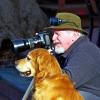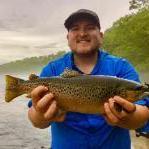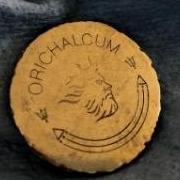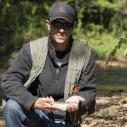-
Posts
314 -
Joined
-
Last visited
-
Days Won
1
rFisherk last won the day on September 2 2015
rFisherk had the most liked content!
Recent Profile Visitors
3,333 profile views
rFisherk's Achievements

Golden Shiner (21/89)
154
Reputation
-
 Dinkslayer reacted to a post in a topic:
Wade Fishing At The Shut-Ins
Dinkslayer reacted to a post in a topic:
Wade Fishing At The Shut-Ins
-
 trythisonemv reacted to a post in a topic:
Micro Caddis Hatch
trythisonemv reacted to a post in a topic:
Micro Caddis Hatch
-
 Pat Magee reacted to a post in a topic:
Big Piney View
Pat Magee reacted to a post in a topic:
Big Piney View
-

Pouring and casting lead fishing lures
rFisherk replied to Old plug's topic in General Angling Discussion
Never really like doing it, but back when I was guiding crappie fishermen on Kentucky Lake, I'd go through a few hundred Road Runners a season, so for financial reason, I molded my own horse-head jigs with a Do-It mold. Beyond the considerable financial advantage, I was able to use gold hooks more appropriate for crappie fishing than those used commercially. These gold hooks straightened out easier, so I didn't loose as many. -
Here's a shot of some #20 dry flies around a dime that I'm tying on this rainy day. This is with my 35mm lens at f-22 and 30 second shutter speed, filled during that 30 seconds with a short blast of flash. Rolan, it's not really about the camera, though it is about the lens. Mostly it is about technique and lighting. After decades with Nikon, I switched to Pentax because they offered glass comparable to Zeiss--at one-third the price. This shot was with my DA 35mm Macro Limited and a K10 camera, which is about a decade old, but still does as good, or better, as my much newer cameras, as long as I use 100 ISO. By the way, shoot all macro at the lowest ISO possible for your camera. Not just noise, but everything, is better at lower ISOs. Another reason I've kept this camera, while giving away newer ones, is it contains a CCD sensor, which I think is far superior to the CMOS sensors found in just about everything these days.
-
Thanks for sharing, Flysmallie. Macro is a fascinating form of photography. Lighting on the bug is very interesting. I use a similar lighting on some of my flower photos to turn the background black and isolate the subject. Flower pictured is a Blue Waxweed. I encourage others to share, and for anyone interested in photography to get a good macro lens.
-
 ness reacted to a post in a topic:
Macro Phootography Tips
ness reacted to a post in a topic:
Macro Phootography Tips
-
 ness reacted to a post in a topic:
Macro Phootography Tips
ness reacted to a post in a topic:
Macro Phootography Tips
-
-
I've developed my own methods for getting maximum detail in macro photography. First of all, you need a true macro lens. These are fixed focal lengths. I have a 35mm and a 100mm. There are some cheap lenses marked macro that are not true macro lenses, but close focus lenses. The difference is not only in how much you can magnify a subject, but more importantly, the quality of the image. The glass is where it's at, so if you want to shoot good macros, by a good macro lens. The photos I've included with this are full macro shots, with my forefinger in them for size relation. The problem with macro is an extremely narrow depth of field, so to get the maximum DOF, I shoot macros in AV (aperture priority) mode and set the aperture between f-11 and f-22, depending upon the lens used and the flatness or width of the subject. My 35mm, for example, handles f-22 without noticeable diffraction (when using flash), while about the maximum aperture I can use without noticeable diffraction on my 100mm is f-14. So, for still subjects, such as tiny flowers and flies, my 35mm is best. The only problem with the 35mm is that at full macro, the front of the lens is only a couple of inches from the subject, so when I need more distance, such as with insects, I use my 100mm, which at full macro is about a foot from the subject. Manual focus is imperative for good macro, so learn to use it. Shooting this way requires a very slow shutters speed, so the real key to good macro photography is a good tripod and a powerful hot-shoe flash. Cheap tripods are like cheap lenses, so buy a good one. You don't need to spend hundreds for a tripod (do so, if you can afford it), but you do need to consider it an important investment to good photography (not just macro). I own a great and expensive tripod with a Swedish ball head, but in the field, I mostly use a mid-price range Manfrotto with a standard tilt-pan head that is light and that I don't mind banging up in the bottom of a canoe and so forth. There are occasions when I can use the onboard flash for macro, but they are rare, and using a good hot-shoe flash is always better. Rarely, however, do I use it attached to the hot shoe. Here's the method I've developed: I set the camera and tripod into position and move it according to the angle and distance I want for the composition. The aperture is preselected and the shutter is set to remote triggering. The slightest movement can detract or ruin a macro image, and simply pressing the shutter release button can cause a slight movement, so use a remote trigger. Then I lock everything down. Next I focus manually. I often focus with a strong light lit, but never shoot with it on. I like a little ambient light, but not from light bulbs of any kind. I like enough light to give me between 5 seconds and a minute of shutter speed. This gives me enough time to aim and fire the flash. I simply turn the flash on, hold it in my hand, and press the test button after the shutter opens. This allows me to control the distance and angle of the flash. I usually change angles and distances and take multiple shots, choosing the best one at full screen on the computer.
-
 SmallyWally reacted to a post in a topic:
Emerald River
SmallyWally reacted to a post in a topic:
Emerald River
-
 Quillback reacted to a post in a topic:
First fish of 2016
Quillback reacted to a post in a topic:
First fish of 2016
-
I caught a few smallmouoths, a few brown trout, a few rainbow trout and a few goggleye on New Year's Day. Biggest was a smallmouth.
-
 marcus reacted to a post in a topic:
First Fish of 16
marcus reacted to a post in a topic:
First Fish of 16
-
No fish fights better than a stream hardened smallmouth. I fished the upper Meramec.
-
My first fish of 2016 came on Jan. 1. It was a nice smallmouth bass. That was followed by a brown trout, then a rainbow, all on a jig I tied to look like a minnow. Good start.
-
Very simple and easy ties--too simple, I believe, to be very effective. Not buggy enough. I like the standard pheasant tail nymph, the hare's ear and the squirrel nymph. And of these three, the squirrel nymph is my long time favorite.
-
Thanks for the replies. I still think it is the way the soft hackle tail flairs that makes it spin, and I reiterate, I'm convinced the reason they work so well is because they spin. I tied the exact pattern on some 1/16th ounce jig heads, and they didn't work nearly as well, probably because they don't spin.
-
 jackdizo reacted to a post in a topic:
Tornado Wolly
jackdizo reacted to a post in a topic:
Tornado Wolly
-
The trout in Maramec Springs have been feeding on a micro caddis hatch for over a month now, and to catch them with satisfactory consistency, I've had to keep going smaller. I'm down to a #24 hook and 8X tippets.
-
 rFisherk reacted to a article:
Lake of the Ozarks Holiday Fishing
rFisherk reacted to a article:
Lake of the Ozarks Holiday Fishing
-
 Eric82 reacted to a post in a topic:
Meramec Springs and River - 11/12 to 11/15
Eric82 reacted to a post in a topic:
Meramec Springs and River - 11/12 to 11/15
-
Jerry used to tie some flies for me way back when I was managing the hunting and fishing departments of Outdoors Inc. Jerry was a master of fly tying--period.
-
First of all, I don't use a stacker, but I also have excellent deer hair. I cut a clump of deer hair for the tail that is at least twice what I need. First I pick out any longer fibers until the tips are fairly even. Next I hold them tightly near the tips with my thumb and forefinger and stroke out any short fibers. Finally I pinch them right at the tips and stroke again. I measure the length of the tail and tie it in about 3/4 way to the eye and wrap back to near the bend. At the bend, I take a few more very loose raps so that the tail fibers don't flair. Then I wrap the thread back to that 3/4 point. (I use a lot of raps, because the thread serves as the body, instead of wrapping floss. Next I cut a section of deer hair that will serve as the body and wing. Again, I cut about twice as much as needed and prepare it the same way as the tail, by stroking out short fibers. I trim the butts so that the clump is a little more than double the shank length, or extends from the eye to just past the tail tips. I tie this in at the 3/4 point and make a lot of wraps (6/0 thread), wrapping all the way to the bend. Then I bring the thread to the 3/4 point and fold the clump forward, taking two or three progressively tighter wraps of thread over the clump. I release the clump and take a few more tight wraps. Next I grab the wing, with is forward and flaired, being sure to grab all the fibers between my thumb and forefinger, and fold it back, while I wrap a bunch of times in front to build a base of thread that holds the clump upright. Front of the wing should be straight up. Next I make a few wraps around the base of the wing to hold the base together better. Next I prepare the hackle (Metz is best), tie it in a wrap it. (If using two hackles, wrap them separately.) I used to put a couple of wraps of hackle behind the wing and the rest in front, but that really isn't necessary. Today, I wrap all the hackle in front of the wing. Final step is the put on a hackle guard and wrap the head so that the front of the hackle is somewhat straight. Doesn't take me any longer with this method to tie a Humpy than it does for any other dry fly. Any questions?
-
I've sort of developed my own way of tying them, which is simpler and easier than videos I've seen, and I have never had one land upside down, or even sideways, for that matter. And Mic, I like to fish my own flies. Don't wish to swap them for others. Thanks, but no thanks.
-
I've long been a fan of big Humpy dry flies, and yesterday I received some #8 dry fly hooks, so I tied some of various colors. Still need to make some with brown wing and red or natural tail.









small.jpg.3ad4d065435c63c1bb4ca6f04819c964.jpg)


small.jpg.5edf4e447523c7acb2206877ef04d09c.jpg)




